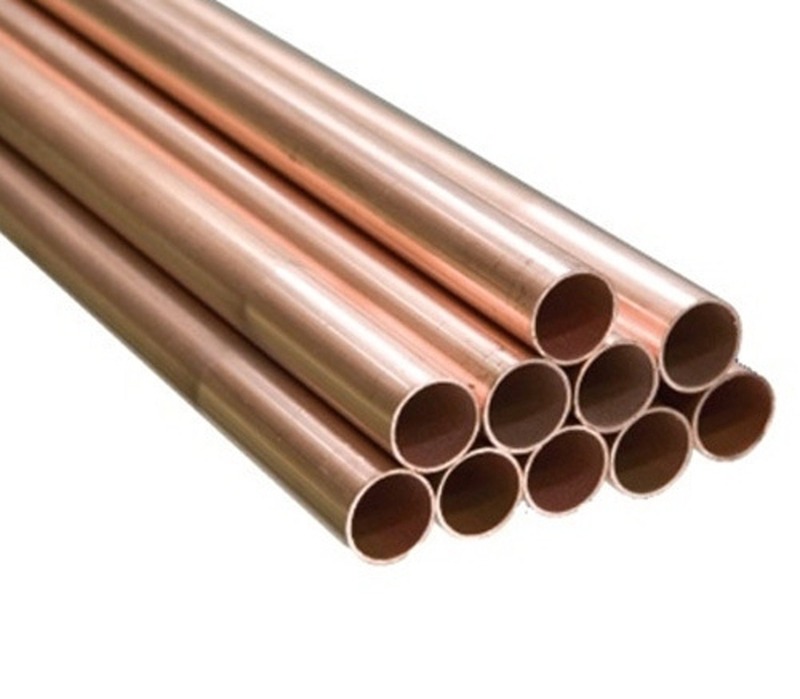Introduction
Condenser Copper Nickel Tubes play a critical role in various industries where efficient heat transfer and strong resistance to corrosion are essential. Manufactured from copper-nickel alloys, mainly 90/10 and 70/30 grades, these tubes are highly valued for their performance in harsh environments, especially where seawater or brackish water is used as a cooling medium. Their combination of excellent thermal conductivity, mechanical strength, biofouling resistance, and long service life makes them a preferred material choice for marine, power generation, oil & gas, and industrial applications. As industries continue to demand more reliable and low-maintenance cooling solutions, copper-nickel condenser tubes stand out as an ideal answer.
What Are They?
Condenser Copper Nickel Tubes are metallic tubes made from copper-nickel (Cu-Ni) alloys, used inside condensers, where steam, gas, or vapors are cooled into a liquid state.
These tubes enable highly efficient heat transfer between fluids and provide exceptional resistance against corrosion, erosion, and biological fouling, especially in harsh environments like seawater systems.
Material Composition and Grades
- 90/10 Copper Nickel (C70600):
- 90% Copper + 10% Nickel.
- Minor additions (~1.4%) of iron and manganese to improve corrosion and erosion resistance.
- Best suited for marine condenser tubes where moderate flow rates are expected.
- 70/30 Copper Nickel (C71500):
- 70% Copper + 30% Nickel.
- More iron (~0.4-0.5%) than 90/10, giving even higher strength and better resistance against turbulence and impingement attacks (such as sand or debris in water).
- Preferred in offshore, deep-sea, and aggressive environments.
Manufacturing Process
- Extrusion: Copper-nickel alloys are extruded into hollow tubes under high pressure.
- Cold Drawing: Tubes are drawn through dies to achieve precise dimensional tolerances and improve mechanical properties.
- Annealing: Tubes are heat-treated to relieve stresses, improve ductility, and enhance corrosion resistance.
- Final Testing: Tubes undergo hydrostatic testing, eddy current testing, and chemical analysis to meet strict standards.
Major International Standards
- ASTM B111 / B111M: Seamless copper and copper-alloy tubes for condensers and heat exchangers.
- ASME SB111: Boiler and pressure vessel specification for copper alloy tubes.
- EEMUA 144: Guidelines specifically for copper alloy tubes used in seawater services.
- MIL-T-16420K: Military standards for marine condenser and heat exchanger tubing.
These standards ensure:
- Correct chemical composition.
- Correct mechanical properties (like strength, elongation).
- Dimensional accuracy.
- No internal defects.
Performance Advantages
Corrosion Resistance:
- Outstanding resistance to pitting, crevice corrosion, and stress corrosion cracking, especially from seawater chlorides and polluted waters.
Biofouling Resistance:
- Copper ions naturally inhibit marine growth like algae, barnacles, and shellfish, minimizing cleaning needs.
Erosion Resistance:
- Withstands high-velocity water flow and suspended solids better than many stainless steels or carbon steels.
Heat Transfer Efficiency:
- Provides a balance of corrosion resistance and good thermal conductivity — important for condenser efficiency.
Mechanical Flexibility:
- Tubes can expand and contract with temperature changes without cracking.
- Good fatigue resistance even in vibration-prone environments like marine vessels or offshore platforms.
Limitations to Know
- Initial Cost: Copper-nickel tubes are more expensive upfront compared to carbon steel or standard stainless steel tubes.
- Ammonia Sensitivity: In environments rich in ammonia (fertilizer plants, chemical facilities), they require special care or alternative materials.
- Galvanic Corrosion Risk: Care must be taken when joining with dissimilar metals (e.g., carbon steel) to prevent galvanic corrosion.
Conclusion
Condenser Copper Nickel Tubes offer a perfect blend of durability, efficiency, and corrosion resistance, making them indispensable in critical heat exchange operations. Their ability to withstand aggressive marine environments, minimize biofouling, and provide long-term reliability ensures operational efficiency with reduced maintenance needs. Although the initial cost may be higher compared to other materials, the exceptional lifespan and lower lifecycle costs make them a wise investment for any condenser system exposed to challenging conditions. Whether for ships, offshore platforms, or thermal power plants, copper-nickel tubes continue to be the material of choice for safe, efficient, and dependable heat transfer.

